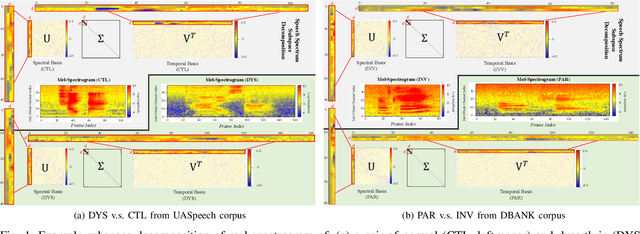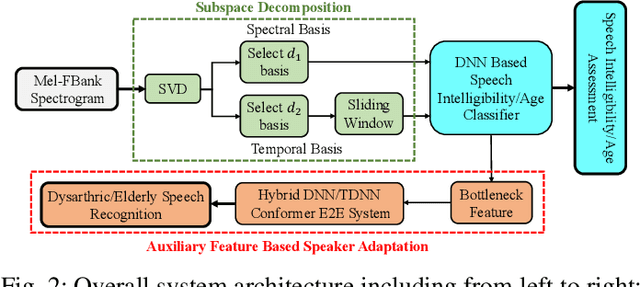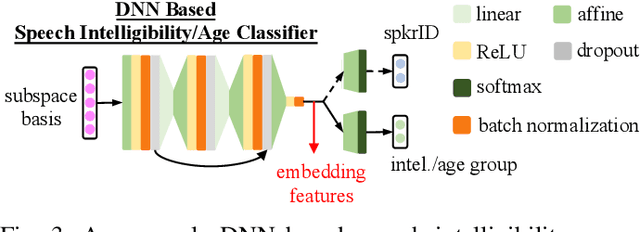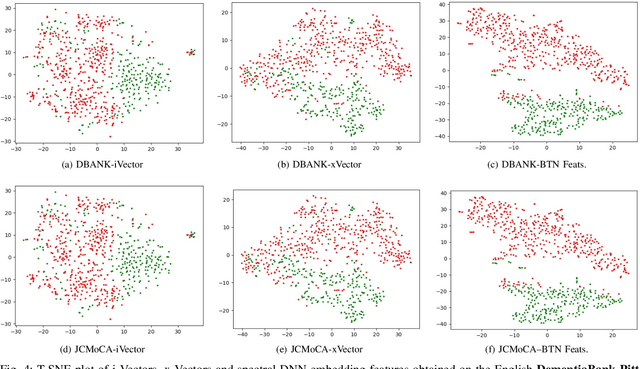Speaker Adaptation Using Spectro-Temporal Deep Features for Dysarthric and Elderly Speech Recognition
Paper and Code
Mar 17, 2022



Despite the rapid progress of automatic speech recognition (ASR) technologies targeting normal speech in recent decades, accurate recognition of dysarthric and elderly speech remains highly challenging tasks to date. Sources of heterogeneity commonly found in normal speech including accent or gender, when further compounded with the variability over age and speech pathology severity level, create large diversity among speakers. To this end, speaker adaptation techniques play a key role in personalization of ASR systems for such users. Motivated by the spectro-temporal level differences between dysarthric, elderly and normal speech that systematically manifest in articulatory imprecision, decreased volume and clarity, slower speaking rates and increased dysfluencies, novel spectrotemporal subspace basis deep embedding features derived using SVD speech spectrum decomposition are proposed in this paper to facilitate auxiliary feature based speaker adaptation of state-of-the-art hybrid DNN/TDNN and end-to-end Conformer speech recognition systems. Experiments were conducted on four tasks: the English UASpeech and TORGO dysarthric speech corpora; the English DementiaBank Pitt and Cantonese JCCOCC MoCA elderly speech datasets. The proposed spectro-temporal deep feature adapted systems outperformed baseline i-Vector and xVector adaptation by up to 2.63% absolute (8.63% relative) reduction in word error rate (WER). Consistent performance improvements were retained after model based speaker adaptation using learning hidden unit contributions (LHUC) was further applied. The best speaker adapted system using the proposed spectral basis embedding features produced the lowest published WER of 25.05% on the UASpeech test set of 16 dysarthric speakers.
 Add to Chrome
Add to Chrome Add to Firefox
Add to Firefox Add to Edge
Add to Edge